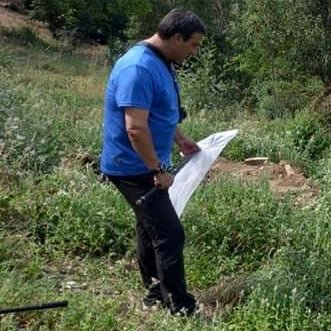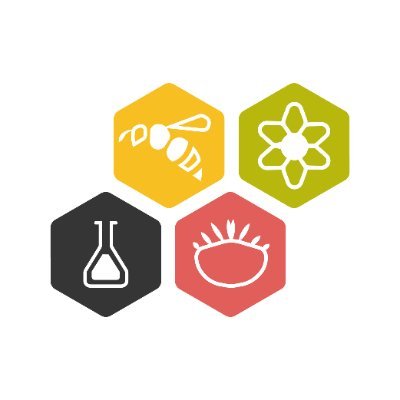
Mónica | Entomologist (she/her)
@monicadb1991👩🏻🔬Biologist | 👩🏻💻PhD Student in functional and applied ecology @Unileon | 🐝Topics: #ecology #entomology #alienspecies #Yellowleggedhornet
Similar User

@AeEntomologia

@GarciaMunoz_Ana

@pandeyent

@benclunie

@RevSociedad

@RodriguezMataP

@MaluAguilar_14

@floserca

@asadrazaq20001

@cristinabotias

@evkamat

@flamesofnoise

@luismon37550951

@punkflies
#Coenagrionmercuriale copulation: male above (blue)-female dark greenish | Caballu del diantre (AST) | Danzelinha, libelinha (PT) | Caballo del diablo (SP) | Damselfly (EN) | #odonates #entomology

🥺Dear Twitter-friends, due to a misunderstanding with the email I have to delete this account and create another one!! I will change this user name and you will find me by @entomoprofessor as well 🥺
Son muchos los insectos que inducen agallas en plantas, entre los que destacan cinípidos (Hymenoptera 🐝) y cecidómidos (Diptera 🪰). Las de esta foto pertenecen al cecidómido D. lichtensteini, el cual ataca las 🍃 de la encina (Q. ilex). En su interior se desarrollan las larvas.

An adult of #Libellulaquadrimaculata in a swampy lagoon | Sacagüeyos (AST) | Libelinha (PT) | Libélula (SP) |Dragonfly (EN) |

ECOSISTEMAS URBANOS E INSECTOS... SOLUCIONES ANTE UN MUNDO CAMBIANTE. Crematogaster scutellaris, mi hormiga favorita, que tiene fuertes tendencias arborícolas y le gustan mucho p.ej, los pinos. Pero aquí están, en medio de la plaza de una ciudad. ¿Sabrías adivinar donde viven? 👇

Se ha publicado el Real Decreto 217/2022, por el que se establece la ordenación y las enseñanzas mínimas de la ESO, donde se propone familiarizar al alumnado con la existencia de las lenguas de signos como parte de la diversidad lingüística ⬇️ boe.es/boe/dias/2022/…

Male of #Lucanuscervus in a forest of #Quercussuber | Vaca loura (PT) | Vaca llouria (AST) | Ciervo volante (SP) | Stag beetle (EN) |

#TerminologyTuesday We need two posts for this because the face is rather crowded with features. It's easy to see the clypeus in this bee as it is yellow and margined by the epistomal sulcus which is dark. Many of the labels here refer to an "area".

Salamandra salamandra subsp. almanzoris. Fire salamander (eng)/ salamandra común (esp)/ Sacavera (ast)

📣 Any paper ready to be submitted? Are you looking for journals? 🦟🪰 @ArrondoRuiz and I have the pleasure to invite you to submitt your work in this special issue. Diversity, Distribution and Phylogeny of Vector Insects mdpi.com/si/108136 #mdpidiversity @MDPIOpenAccess

EXTRA: Además de ojos compuestos, muchos insectos tienen también ojos simples u ocelos normalmente en grupos de 3 en el vértice de la cabeza. Os hablé de ellos hace unas semanas en este tweet 👇
Además de ojos compuestos, muchos insectos tienen ocelos en la parte superior de su cabeza. Estos "ojos" son + sensibles y reaccionan + rápido a la luz que los ojos compuestos, por lo que su percepción del 🌍 es + compleja que la nuestra. La luz también ayuda a corregir el vuelo.

¿Cómo ven el mundo los insectos? Nuestros pequeños vecinos son fascinantes por muchos motivos, pero quizá uno de los más sorprendentes sea su visión. ¿Cómo perciben el mundo que les rodea? ¿Ven igual que nosotros? Os lo explico en este #HILO 👇

Nace el primer observatorio ibérico para mejorar la salud de los #ríos frente al cambio global. Participará un grupo científico de más de 70 personas de centros de investigación de España y Portugal junto con gestores de distintas cuencas hidrográficas. 🔗delegacion.andalucia.csic.es/nace-el-primer…

¿Sabías que...? En Japón, la especie Triconephila clavata se conoce popularmente como Jorōgumo, nombre que recibe un yōkai (ser mitológico del folklore japonés equivalente a un fantasma o goblin) con forma de 🕷️ que se transforma en mujer para seducir a hombres y devorarlos.

Such a beautiful day with this little friend #Vespulagermanica ! And remember: #insectsarefriends
NOT ALL BEES ARE HONEYBEES! More than 90% of known 🐝 are solitary. They don't make honey or build honeycombs, although they are key to pollinating weeds 🌿 and crops 🌾. Therefore, it is of vital importance to preserve their populations that we protect our natural environments.

Amphipods are more hardcore than you think...
United States Trends
- 1. #TheGameAwards 361 B posts
- 2. Astro Bot 22,1 B posts
- 3. Deebo 30,1 B posts
- 4. 49ers 47,5 B posts
- 5. Purdy 18,5 B posts
- 6. Naughty Dog 36,3 B posts
- 7. Rams 38 B posts
- 8. Niners 9.017 posts
- 9. Okami 41,1 B posts
- 10. Cooper Kupp 4.738 posts
- 11. $LINGO 68,2 B posts
- 12. Clive 29 B posts
- 13. Elden Ring 151 B posts
- 14. Game of the Year 66,7 B posts
- 15. Stafford 12 B posts
- 16. Witcher 4 42,7 B posts
- 17. Geoff 30,6 B posts
- 18. Metaphor 41,7 B posts
- 19. Ciri 45,6 B posts
- 20. Kittle 7.533 posts
Who to follow
-
 Asociación Española de Entomología
Asociación Española de Entomología
@AeEntomologia -
 Ana García-Muñoz
Ana García-Muñoz
@GarciaMunoz_Ana -
 Rakesh Pandey
Rakesh Pandey
@pandeyent -
 Dr Ben Clunie
Dr Ben Clunie
@benclunie -
 Revista Chilena de Entomología
Revista Chilena de Entomología
@RevSociedad -
 P. Rodriguez
P. Rodriguez
@RodriguezMataP -
 Lucia Aguilar
Lucia Aguilar
@MaluAguilar_14 -
 flo
flo
@floserca -
 Asad
Asad
@asadrazaq20001 -
 Cristina Botías
Cristina Botías
@cristinabotias -
 Eva Matoušková
Eva Matoušková
@evkamat -
 Juan José De Pino
Juan José De Pino
@flamesofnoise -
 insect man
insect man
@luismon37550951 -
 JM Perilla
JM Perilla
@punkflies
Something went wrong.
Something went wrong.




















































































